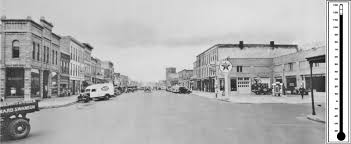Keokuk’s Sizzling Record: The Hottest Day in Iowa History

On July 20, 1934, Keokuk, Iowa, made history in a way few cities would ever want to: it recorded the hottest temperature in Iowa’s history—a blistering 118°F (48°C). This sweltering day remains unmatched in the state’s climate records, a stark reminder of the extremes Iowa weather can bring. While many are familiar with Iowa’s harsh winters and unpredictable storms, few realize that the most intense heat wave ever recorded in the state’s history happened right here in Keokuk.
The Heat Wave of 1934
The summer of 1934 was not just a hot one for Keokuk—it was a scorcher across the country. This year marked one of the most severe heat waves in U.S. history, occurring during the height of the Dust Bowl, a period of extreme drought and agricultural devastation in the Great Plains. Across the Midwest, temperatures soared into dangerous triple digits, and Iowa was no exception.
During July, much of the state suffered under relentless heat, with temperatures well above 100°F for days on end. However, it was Keokuk that reached the peak of this deadly heat wave, topping out at 118°F—the hottest official temperature ever recorded in Iowa.
Why Was It So Hot?
The record-setting heat wasn’t just a fluke—it was the result of a perfect storm of environmental and atmospheric conditions:
- Drought Conditions: By the summer of 1934, much of the Midwest was suffering from extreme drought. With little moisture in the ground, there was nothing to help cool the air.
- High-Pressure System: A persistent high-pressure system settled over the region, trapping heat and preventing cloud cover or rain from offering any relief.
- The Dust Bowl Effect: The ongoing Dust Bowl crisis meant that much of the farmland was barren, allowing the sun’s heat to reflect off the dry soil instead of being absorbed by crops or vegetation.
These factors combined to create one of the hottest periods in U.S. history, and Keokuk bore the brunt of it on that infamous July day.
The Impact on Keokuk
Life in Keokuk during the summer of 1934 was already difficult, but the record-setting heat pushed conditions to the extreme.
- Crops and Livestock Suffered: The intense heat, combined with ongoing drought, devastated local farms. Cornfields withered, pastures dried up, and livestock perished from heat exhaustion.
- Cities Struggled to Cope: Without modern air conditioning, homes and businesses became unbearable. Residents sought refuge in shaded parks, along the Mississippi River, or in basements to escape the oppressive heat.
- Health Risks Soared: Heatstroke and dehydration became real dangers, especially for children, the elderly, and those working outdoors. Across the state, fatalities from the extreme weather were reported.
Despite these challenges, the people of Keokuk, like many Midwesterners, persevered. Though the summer of 1934 was brutal, the community endured and continued to rebuild in the years that followed.
Could It Happen Again?
While Keokuk’s record has stood for nearly a century, Iowa’s climate continues to see extreme variations. Meteorologists warn that as global temperatures rise, heat waves could become more frequent and severe. While modern technology—such as air conditioning, improved forecasting, and emergency response systems—helps mitigate the impact, the lessons of 1934 remain relevant today.
Extreme heat remains a threat, and cities across Iowa must prepare for the possibility that another record-breaking day could be on the horizon. Keokuk’s history reminds us of the power of nature and the resilience of its people.
A Record That Still Stands
Nearly 90 years later, Keokuk remains Iowa’s record-holder for the hottest temperature ever recorded. It’s a title that few cities would want, but one that has cemented Keokuk’s place in meteorological history.
While the city is more commonly known for its rich history, beautiful riverfront, and engineering marvels like Lock & Dam No. 19, this piece of Keokuk’s past remains a fascinating—and sometimes overlooked—part of its story.
So, the next time you find yourself sweating through a hot Iowa summer, just remember: it could be worse. In 1934, Keokuk proved that it could, indeed, be much worse.

0 Comments